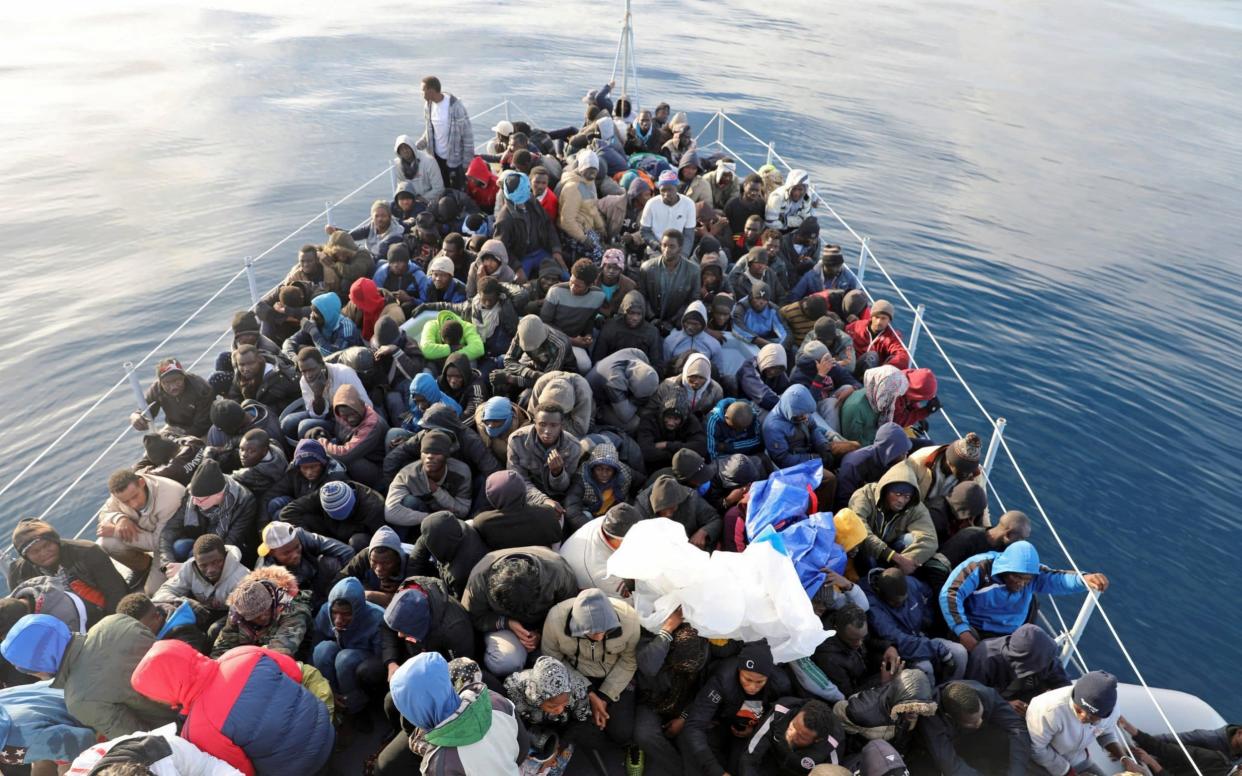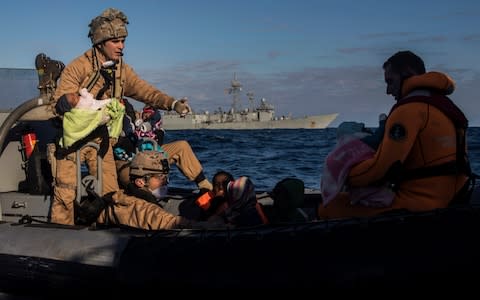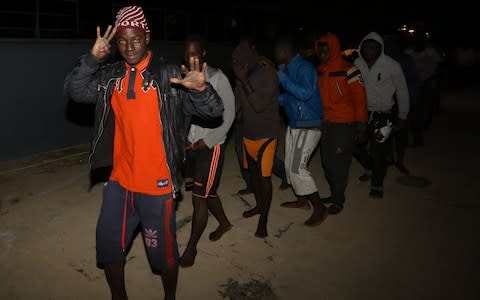Up to 90 migrants feared to have drowned off Libyan coast

Up to 90 mostly Pakistani migrants were feared to have drowned off the coast of Libya on Friday after their boat capsized.
The vessel, owned by smugglers, was meant to have taken the migrants towards Italy but instead sank not far from the coast.
The bodies of 10 victims were reported to have washed up on the shore, eight of them Pakistani and two Libyan.
At least two people survived the shipwreck and swam to shore while a third was rescued by a passing fishing boat, officials said.
There has been a recent increase in the number of Pakistanis trying to make the crossing from Libya towards Italy.

Last year, just over 3,100 Pakistanis reached Italy by sea, making them the 13th largest nationality among migrants.
This year, however, they are already the third most numerous nationality - around 240 made the crossing in January.
Humanitarian organisations believe the Pakistanis are made up of two distinct groups.
“There are those who have been living and working in Libya for years, mostly in the construction sector, since the time of Gadaffi,” but now find conditions so dangerous that they want to leave the country, Flavio Di Giacomo of the International Organisation for Migration, told The Telegraph.
“But I think there are others who tried to get into Europe via Turkey, Greece and the Balkan route, and found the borders closed, so they are looking for another way. They can fly from Istanbul to Khartoum and then pay smugglers to take them across the desert by truck.”
Olivia Headon, also from the IOM, said: “It's quite a jump in numbers but it is unclear whether it will be a trend that will continue throughout the rest of the year."
Trafficking networks are quick to identify new markets, routes and nationalities in a highly fluid situation.
"Smugglers sell migrants the idea of Europe as a kind of paradise, they are very good salesmen. Migrants may know the risks of the sea crossing but they think it will be worth it," she said.

Last year 119,000 migrants and refugees managed to reach Italy, most of them after being rescued at sea by European navies and coast guards as well as vessels operated by NGOs.
The year before, 181,000 made it to Italy.
Migration has become a key issue in Italy's election campaign, with voters due to go to the polls on March 4.
Major parties, including Silvio Berlusconi's Forza Italia and the Right-wing League, formerly the Northern League, have said Italy can no longer accept such high numbers and have called for hundreds of thousands of migrants already in the country to be sent home.
"In the last few years Italy repatriated 15,000 migrants. It would be my aim to triple that number," Matteo Salvini, the head of the League, said on Friday.
If countries in Africa and elsewhere refused to take back migrants, then tariffs would be imposed on their exports to Italy, Mr Salvini said.
"Either they collaborate on migration or we hit them with excise duties," he told La Stampa newspaper.

He recently said that if elected prime minister, he would aim to expel half a million migrants currently living in Italy.
The League is in an uneasy alliance with Mr Berlusconi's party and a hard-Right party, Brothers of Italy.
Together they are predicted to win around 35 per cent of the vote - the largest share of any political bloc.
In order to form a government they would have to forge a coalition with another party, possibly the centre-Left Democratic Party of former prime minister Matteo Renzi.
For years, Libya has been the main departure point for migrants and refugees trying to reach Europe, but numbers have dropped significantly in the last six months as the Libyan coast guard, under pressure from Rome and the EU, blocked departures.
Human rights groups say migrants in Libya are kept in squalid, overcrowded camps and warehouses where they are raped, tortured and abused.
Video emerged recently of Libyan traffickers dripping burning plastic onto the bare skin of migrants in an attempt to make their families pay greater ransoms for their release.

